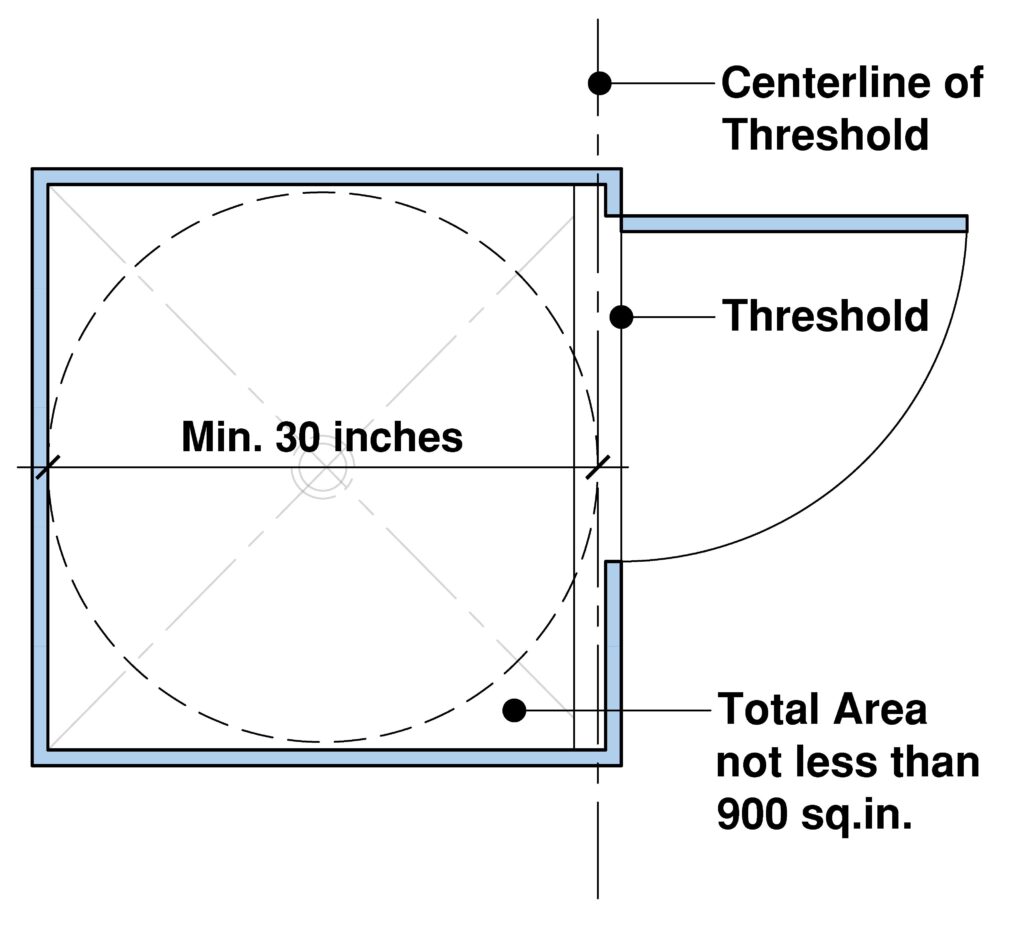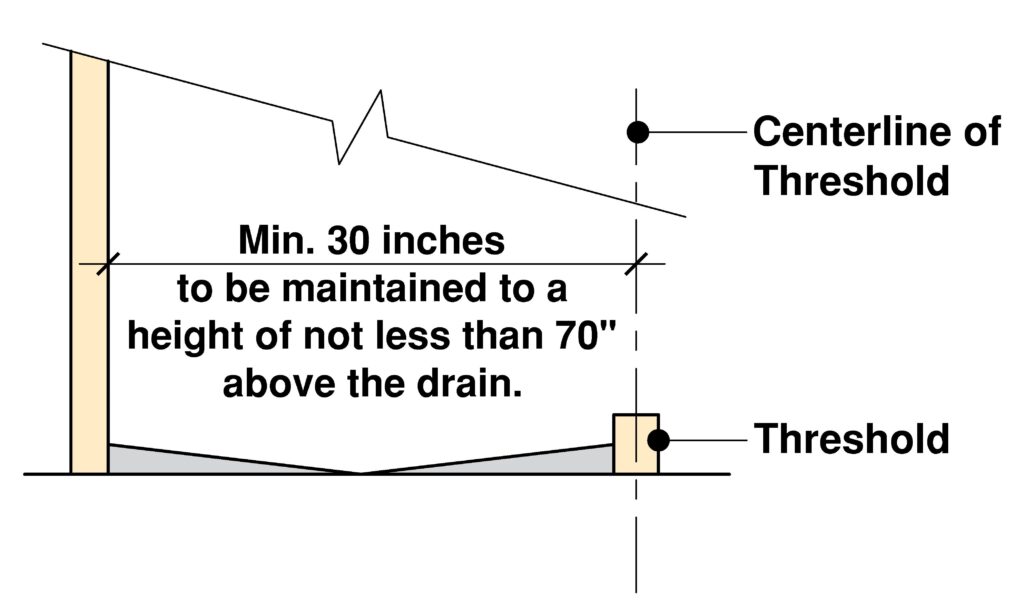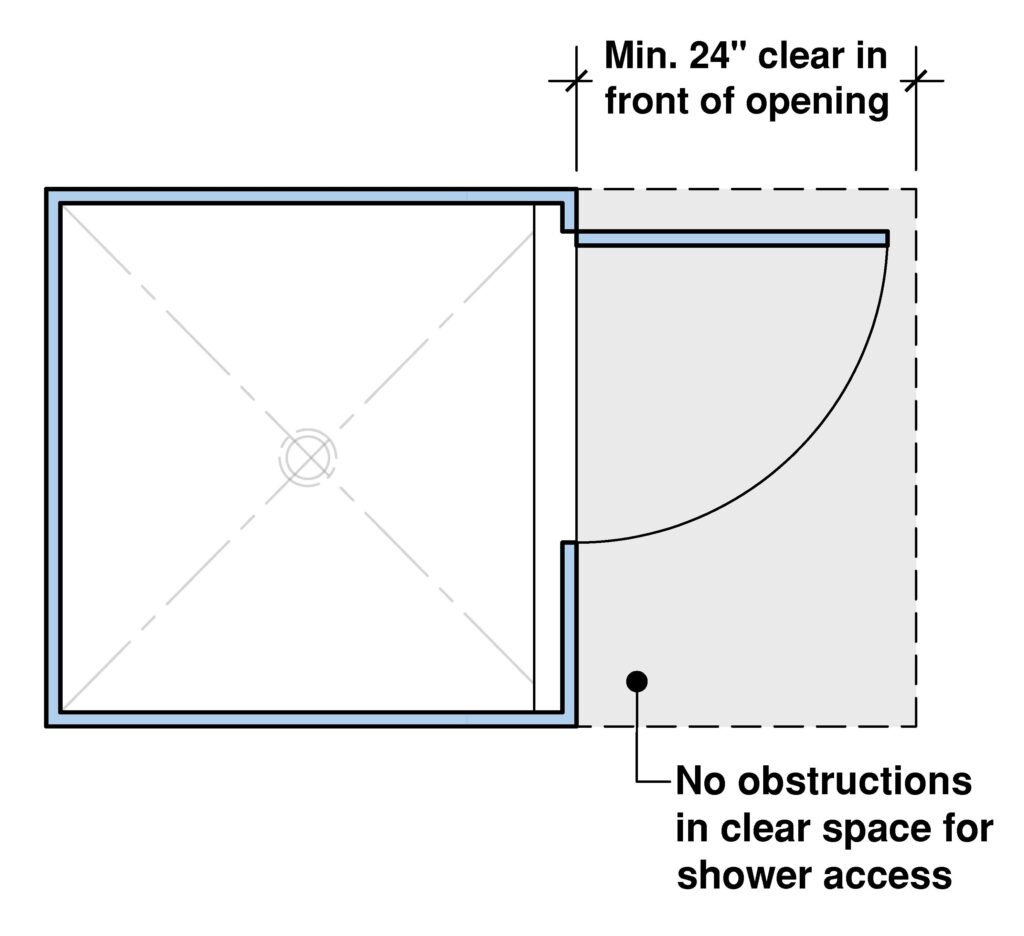When it comes to the code requirements for residential showers, the International Residential Code (IRC) outlines the size, clearance, and dimensions for residential showers.
The IRC has an entire part within it dedicated to plumbing systems and inspections of residential dwelling units subject to the International Residential Code.
Since the IRC was created to serve as a complete/comprehensive code, it is divided into eight main parts. One of these being for plumbing systems.
Fun Tip: To learn the difference between the International Residential Code (IRC) and the International Building Code (IBC), be sure to check out this POST.
The code requirements for residential plumbing fixtures can be found in Chapter 27 of the IRC. The purpose of this chapter is intended to ensure that plumbing fixtures are installed properly to promote usability and safe, sanitary conditions.
In this post we will go over one of the important features related to the shower compartment, its size.
The shower compartment itself has many clearances and dimensions that must be met to ensure usability.
Shower compartment requirements can be found in Section P2708.1 of the 2018 International Residential Code (IRC).
Minimum Shower Size
What is the minimum size of a shower compartment?
Shower compartments shall have not less than 900 square inches of interior cross-sectional area. Shower compartments shall be not less than 30 inches in minimum dimension measured from the finished interior dimension of the shower compartment, exclusive of fixture valves, shower heads, soap dishes, and safety grab bars or rails.
Section P2708.1 provides a minimum size area and dimension that a shower compartment must have.
The interior cross-sectional area must not be less than 900 square inches and the minimum dimension measured from the finished interior surface must not be less than 30 inches.
Here’s a graphic to best illustrate this.

Now that we know the minimum size and dimension, the next question to ask is how is it measured.
The code section above did get into answering part of this question by giving a list of features to exclude in these dimensions but section P2708.1 continues to clarify as we read further.
How to measure a shower compartment?
The minimum required area and dimension shall be measured from the finished interior dimension at a height equal to the top of the threshold and at a point tangent to its centerline and shall be continued to a height of not less than 70 inches above the shower drain outlet.
This section provides a bit more clarity. Since a shower compartment will have some type of nonabsorbent material applied to the surface, the dimensions are measured from this finished point.
However at least one side of the shower will typically not be enclosed by a wall and this section specifies to take the measurement to a point tangent to the centerline of the threshold.
Then the dimensions must be maintained throughout the shower to a height not less than 70 inches above the shower drain outlet.
Here’s another graphic to best illustrate this.

Are there any exceptions to the minimum size of a shower compartment?
The code section we looked at above does give two exceptions.
1. Fold-down seats shall be permitted in the shower, provided the required 900-square-inch dimension is maintained when the seat is in the folded-up position.
2. Shower compartments having not less than 25 inches in minimum dimension measured from the finished interior dimension of the compartment provided that the shower compartment has a cross-sectional area of not less than 1,300 square inches.
Exception 1 allows a seat to be installed within the minimum required area and dimension when it is in the folded-up position. Therefore the folded seat must no violate these dimensions.
Exception 2 allows the minimum interior dimension to be less than 30 inches but not less than 25 inches only if the minimum area of the shower compartment is not less than 1,300 square inches.
This exception allows for a narrower shower if the overall size of the shower compartment is larger. This helps if you cannot achieve the minimum width dimension.
Shower Compartment Clearance
What clearances must a shower compartment have?
To best answer this question we must look back to the code section that referred us to this plumbing section in the first place.
Section R307.1 provides us with a diagram to show the required clearances so that a shower compartment can be accessible and usable.
This diagram shows that the minimum fixture clearance of no less than 24 inches is required to the front of a shower compartment opening.
Here’s’ a graphic to best illustrate this.

So this basically sums up the basic code requirements for shower compartment sizes and clearances within residential dwelling units that are subject to the International Residential Code (IRC).
Ceiling Clearance for Showers
One final thing to note regarding clearances for showers is that although this section of the code does not get into it, there is a code section regarding minimum ceiling heights. That section talks about the minimum ceiling height clearances required for showers.
To get an understanding of that requirement, since it relates to this topic, be sure to check out THIS POST for more information.
.
* Reference Source – 2018 International Residential Code – [Buy on Amazon]
.
Related Articles to Read:
